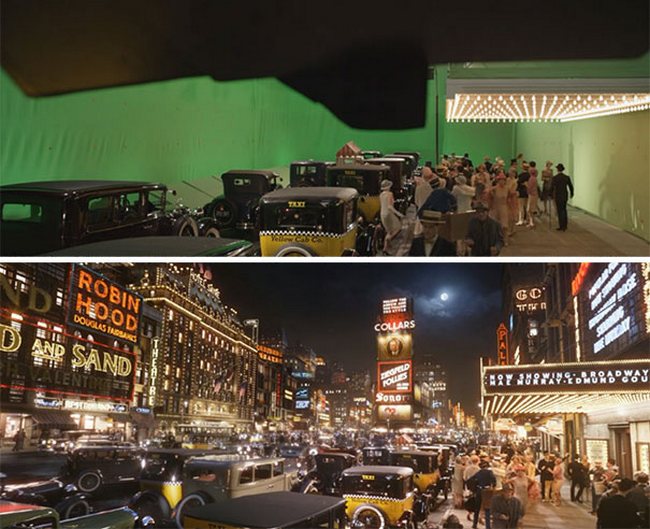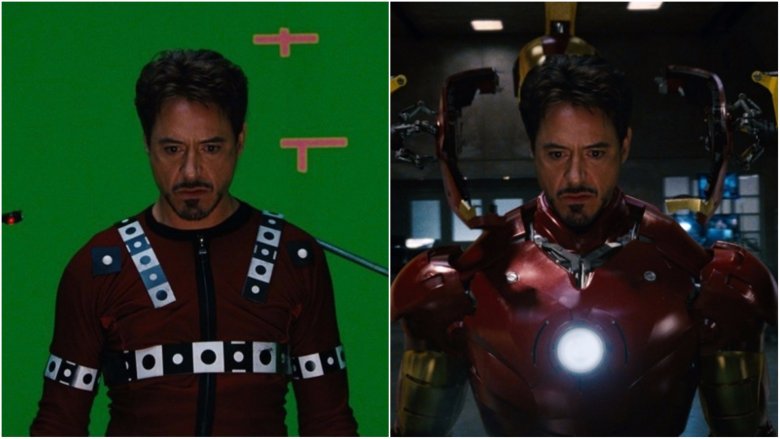One probably already knows that many movies use VFX effects to enhance (or sometimes ruin) our film experience, but you probably didn’t realize just how often – and to what degree- such effects are used in today’s film productions.
Sure we knew that the tiger in Life of Pi wasn’t original. Neither was most of what we saw in The Avengers. Oh, and Alice in Wonderland. That wasn’t real either. Sorry, but you might be shocked to know that other movies have also been digitally altered and in ways that you might not expect. Take a glance at the revealing before-and-after shots we’ve compiled for you to see what we mean. You’ll never look at films in the same way again.
Deadpool’s Baby Legs
Given, the idea of a grown man with a set of baby appendages sounds disturbing beyond belief, but within the domain of the Deadpool-verse, it totally works as a humorous sight gag that draws impressive reactions from the supporting cast.
Tiger in Life Of Pi
Four original tigers were used in the production for reference and motion capture, and actual pivotal shots. Including scenes of real tigers forced the team to make their digital tigers look realistic enough to be indiscernible from the actual tigers.
Mad Hatter from Alice In Wonderland
For example, all the animals in the film are CGI; The Mad Hatter shoot only uses special effects with green screen. And the scene where he was swinging from top of the castle to the ground was also CGI.
Twilight Saga Werewolves
Jacob can transform into a wolf at his own will, but producing this effect on screen was incredibly challenging. Typically, the editors used CGI to animate the wolf version of Jacob and the rest of his pack.
WandaVision And Thanos
Avengers: Endgame had its heavy dependence on the digital Thanos as a critical character and an absolutely epic final battle sequence. It features basically every living MCU hero so far and had 2,496 shots that required visual effects. That’s a very high number, even for a mega-blockbuster.
The Hobbit
The Hobbit movies were not supposed to be using this much CGI in the first place. At the beginning of the project, Del Toro was supposed to direct the film. However, because of some setbacks, he had to leave the project. So, PJ decided to take over. All the preparations that Del Toro did, and as you can imagine, PJ had to start the designs and practices the way HE wanted it.
The Avengers
Like many movies, Avengers: Endgame is full of VFX. The compilation of over 20 films in 11 years, Endgame brought Earth’s Mightiest Heroes together for one last battle against Thanos and his minions.
The Harry Potter Series
It’s hard to analyze a film franchise like Harry Potter critically. After all, most of us actually grew up watching these films, as well as J.K. Rowling’s legendary books. Although the prominent films never won an Academy Award, they were nominated many times. Most of these nominations had to do with the director’s use of production design and VFX. Therefore, even those who weren’t fans of the franchise knew just how strong its visuals were in the movies.
The Dark Knight Half Burnt Face
For Two-Face, Nolan decided to break new rules. “This character was one of our major CGI challenges,” recalls overall Visual Effects Director Nick Davis. Chris was disinterested in going the traditional makeup route. He felt that it would be an additional effect. So, they actually removed the skin digitally.
The Matrix
More than twenty years later, the film’s black leather-and-shades aesthetic may date it, but its visual effects somehow don’t. By now, we’ve all seen the revealed mechanics of “bullet time,” an effect that astonished The Matrix’s early fans by nearly freezing time for dramatic camera movements. They lined up a set of still cameras along a predetermined road, then had each of the cameras take a shot, one-by-one, in a split second.
Rise of the Planet of the Apes
Andy Serkis, Weta Digital, and the team behind the Planet of the Apes trilogy have done it again. War for the Planet of the Apes is receiving many laurels—and not just for being an extremely entertaining science-fiction film. It proves that CGI has no limits, offering powerful anti-captivity, pro-animal right messages along the way.
X-Men: Days Of Future Past
The film used awesome CGI effects to bring character to the heroes and villains of the movie. The life-like graphics keeps the audience engaged throughout the film.
Game Of Thrones
More than 300 artists worked on various VFX aspects of the show, including ships, castles, and substantial blood-thirsty battles. The dragon team alone consisted of almost 40 artists.
Oz, The Great And Powerful
The team of Oz, the Great, and Powerful gathered at Pasadena’s Langham Hotel to meet with the media before the film’s opening. They cited the process of making the movie, particularly the technical aspects. It presented a set of novel challenges, from the creation of excellent VFX characters to the construction of an entire imaginary world.
The Wolf Of Wall Street
A great many films use CGI in ways that most audiences never think about while a movie runs. Consider Martin Scorsese’s film, The Wolf of Wall Street. When Jordan Belfort goes to London to recruit Aunt Emma for a scheme, there’s a simple shot of Leonardo DiCaprio and Joanna Lumley walking into a flat.
The Hunger Games
To help create a lasting impression for the first installment in The Hunger Games trilogy, Hybride’s VFX artists showcased their expertise with exceptionally realistic shots that blend in perfectly throughout the film.
The Chronicles Of Narnia and The Voyage Of The Dawn Treader
In the film, visual effects director, Angus Bickerton, led the creation of some 1400 scenes in the third film adaptation of C. S. Lewis’s fantasy series.
The Walking Dead
Though special effects and makeup guru Greg Nicotero and team came up with a slew of gory practical effects for the zombie series, the computer effects helped supplement walker crowds, especially when the like-minded biters form into massive hordes comprised of hundred walkers.
Avatar
Avatar utilizes 60% CGI imagery, with a majority of the CG character animation filmed with revolutionary new motion-capture techniques using live actors. Spielberg revolutionized the film industry with this movie.
Thor Vs. Hulk Scene
Although Hulk is a VFX character, the fight feels natural and effective. And there’s a reason for that: not only was it staged with the main actors, but the stunt opposites were specially chosen to represent the appropriate superhero.
Gravity
Continuous, uninterrupted shot sequences done without using virtual cinematography, only CGI backgrounds, and live actors.
The Great Gatsby
It’s no secret that Baz Luhrmann is a big fan of special effects. The movie was filmed in 3D, which was all-too-obvious to those who chose to see it in old-fashioned 2D. Gatsby’s mansion was also created with CGI. However, it was based on a real house (just not one on Long Island).
Iron Man
The Iron Man suit was mostly a CGI creation for a large part of Robert Downey Jr.’s run in the MCU. But, in the beginning, Iron Man director Jon Favreau and Marvel Studios aimed for a practical suit in the movies.
Boardwalk Empire
Among the absolutely fascinating things you’ll learn from this film is that Richard Harrow’s face is done in post-production and that virtually the entire set is a green screen.
Deadly Honeymoon
Director Paul Shapiro recreated the scenes with the help of green-screen in ‘Deadly Honeymoon.’ Significantly, the cruise scene looks epic.
It’s hard to know how good a visual effects team is until you see the before and after images from the movies, and it is eye-opening. Visit our page for more such articles on movies.





























